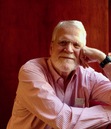Mark Scott Smith's Blog: Enemy in the Mirror, page 80
April 23, 2018
Race-Based Education USA
In 1946 A US district court case in Orange County, Ca., Mendez vs. Westminster, ruled that race-based public school enrollment was illegal.
During the trial, the Mendez family’s attorney presented social science evidence that segregation resulted in feelings of inferiority among Mexican-American children and could undermine their ability to be productive American citizens.
The U.S. District Court agreed with the plaintiffs and ordered that the school districts cease their “discriminatory practices against the pupils of Mexican descent in the public schools.”
After review of an appeal by the school districts, the U.S. Court of Appeals affirmed the lower court ruling. Two months later, California became the first state to officially desegregate its public schools.
The post Race-Based Education USA appeared first on Enemy in the Mirror.
April 19, 2018
Muddy Waters
Growing up in Mississippi, McKinley Morganfield (1913 – 1983) played Delta blues in the style of Son House and Robert Johnson.
Later, performing as Muddy Waters, he was recognized as one of the original modern Chicago blues musicians of the late 1940s – early 1950s.
Chicago blues augmented the basic Delta blues ensemble of acoustic guitar and harmonica with amplified guitar and bass, drums, piano, harmonica, and sometimes saxophone.
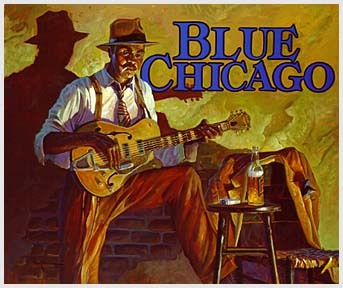
Here is a list of Chicago blues musicians
In 1956, as a young teen growing up in Connecticut, I listened to CKLW Windsor/Detroit late at night.
My favorite song was Smokestack Lightning by Howlin’ Wolf.
A bit later, Buddy Guy was one of my favorites.
And of course, although not from Chicago, my all-time blues favorite, BB King (1925-2015)

There are so many great blues musicians. I just know you must have some favorites.
Please post a link to a favorite musician in the comments.
 ︎
︎The post Muddy Waters appeared first on Enemy in the Mirror.
April 16, 2018
20th Century Chinese Literature

https://zhoudynasty-confucius.weebly....
The recorded history of Chinese literature begins with an era of great philosophical and cultural advances known as the Hundred Schools of Thought during the Eastern Zhou Dynasty (770–256 BC).
Following the overthrow of the Qing dynasty in 1912 and the establishment of the Republic of China, many intellectuals challenged literary traditions of the past and revised the Chinese language to make it more accessible to the public.
In the second decade of the 20th century, the New Culture Movement expressed disillusionment with traditional Chinese culture and promoted individual freedom and women’s liberation instead of the traditional patriarchal structure of Chinese society. Confucian texts and ancient classics were critically analyzed and egalitarian values were promoted. The socially reflective, realistic style of the New Culture Movement was predominant in Chinese literature into the 1940s when it was gradually displaced by literature laced with propaganda.
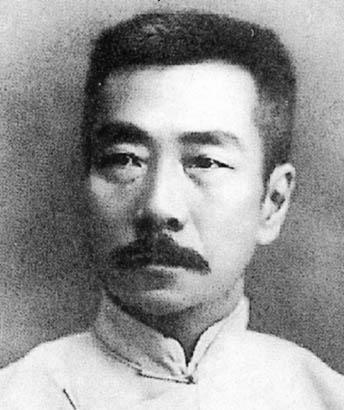
LuXun (Wikipedia)
Lu Xun (1881–1936) was a founder of Baihua Chinese literature which utilized a vernacular style of language. Inspired by the Ukrainian novelist Nikolay Gogol, Lu Xun’s famous short story Diary of a Mad Man was published in 1918.

In the early 20th century, another literary group (much smaller than the New Culture Movement) was called the Creation Society (Chuangzao She). This movement claimed to follow the Romantic” tradition of “art for arts sake” and avoided any expression of social responsibility by writers.
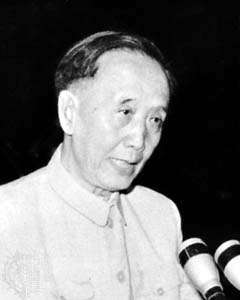
Guo Moro (britannica.com)
In 1924, the leader of the Creation Society Guo Moruo, a prolific writer and translator, converted to Marxism, and the group transformed into China’s first Marxist literary society. After the establishment of the Communist People’s Republic of China, Guo Moruo became president of the Chinese Academy of Sciences.
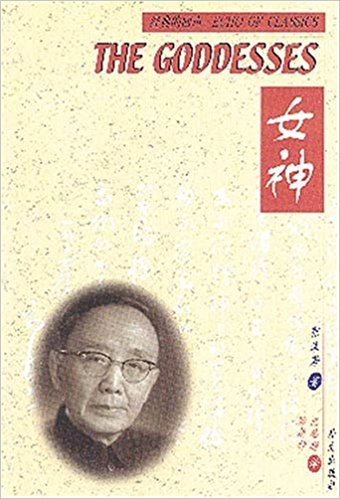
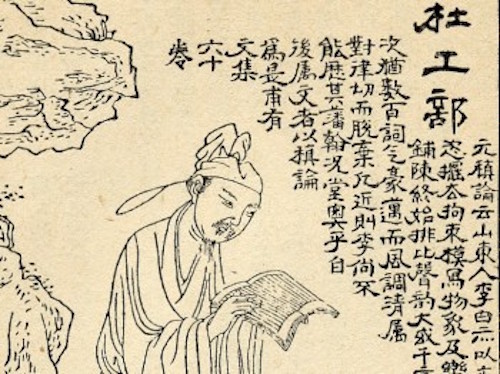
Poetry Foundation
In the 1930s modern poets, writing in the vernacular included Zhu Xiang, Li Jinfa, Wen Yiduo and Dai Wangshu,
The Dream Seeker by Dai Wangshu
Dream can bloom,
Dream can beautifully bloom:
Go and seek that invaluable treasure.
In the green sea,
In the bottom of the green sea,
Hides deep a golden shell.
Go and climb the iceberg for nine years,
Go and sail the drought sea for nine years,
Then you can meet that golden shell.
It has the heaven’s thundering sound,
It has the sea’s billowing sound.
And it will intoxicate your heart.
Water it in the sea for nine years,
Water it in the heaven for nine years,
Then, it will bloom in a dark night.
When you are white haired,
When you are dim eyed,
The golden shell will produce a rosy pearl.
Hold the rosy pearl with your arms,
Keep the rosy pearl at your pillow,
Then, a dream will arise in silence.
Your dream has bloomed,
Your dream has beautifully bloomed,
When you get old.
___________________
The post 20th Century Chinese Literature appeared first on Enemy in the Mirror.
April 12, 2018
Postwar Hiroshima & Nagasaki
This home movie really took me there.
Although grainy, watch this short film clip of 8mm home movies taken by U.S. Army Major Morris Hall during a 3-month tour of Japan less than a year after surrender. Filming with an 8mm home movie camera, Major Hall documented the every-day lives of citizens rebuilding their devastated city (probably Nagasaki) less than a year after the surrender of Imperial Japan.
Here are some interesting posts about the cities of Hiroshima and Nagasaki after the A-bomb blasts of August 6 and 9, 1945:
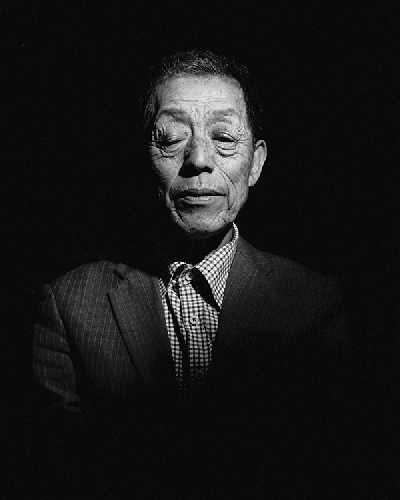
Read: SURVIVORS OF THE ATOMIC BLASTS IN HIROSHIMA AND NAGASAKI SHARE THEIR STORIES
 View: Hiroshima and Nagasaki before and after photos
View: Hiroshima and Nagasaki before and after photos
The post Postwar Hiroshima & Nagasaki appeared first on Enemy in the Mirror.
April 9, 2018
The Best Years of Our Lives
The Best Years of Our Lives was a 1946 film directed by William Wyler that starred Myrna Loy, Fredric March, Dana Andrews, Teresa Wright, Virginia Mayo, and Harold Russell.
The film tells the story of three United States servicemen readjusting to civilian life after coming home from WWII to fictional “Boone City” (reportedly modeled after Cincinnati Ohio).
The Best Years of Our Lives won seven 1946 Academy Awards, including Best Picture, Best Director, Best Actor (Fredric March), Best Supporting Actor (Harold Russell), Best Film Editing (Daniel Mandell), Best Adapted Screenplay (Robert E. Sherwood) and Best Original Score (Hugo Friedhofer).
The movie sold ~55 million tickets in the USA and was the highest-grossing film in both the United States and UK since the 1939 release of Gone with the Wind.
The post The Best Years of Our Lives appeared first on Enemy in the Mirror.
April 5, 2018
U.S. Military Force Today

In 2017 total U.S. military personnel numbered 2,363,675 with 1,373,650 active and 990,025 in reserve. (DoD photo by Petty Officer 1st Class Daniel N. Woods, U.S. Navy). 


Ike on D-Day (Wikimedia Commons)
US MILITARY PERSONNEL (1939-1945)
Year
Army
Navy
Marines
Coast Guard
Total
1939
189,839
125,202
19,432
334,473
1940
269,023
160,997
28,345
458,365
1941
1,462,315
284,427
54,359
1,801,101
1942
3,075,608
640,570
142,613
56,716*
3,915,507
1943
6,994,472
1,741,750
308,523
151,167
9,195,912
1944
7,994,750
2,981,365
475,604
171,749
11,623,468
1945
8,267,958
3,380,817
474,680
85,783
12,209,238
*Coast Guard listed only as wartime strength
The post U.S. Military Force Today appeared first on Enemy in the Mirror.
April 2, 2018
US Military Personnel WWII

Operation Torch, November 1942. (Wikimedia Commons )
I began writing an author’s note for my soon-to-be-released novel The Osprey and the Sea Wolf ~ The Battle of the Atlantic 1942:
The first six months of 1942 were dark for America. Imperial Japanese forces ran amok across the Pacific. The Axis powers had swept through Europe to the English Channel. America had to step up. Wartime industry went into high gear. Millions of civilians were inducted into the military.
I wondered: how many were actually inducted in 1942 – so I looked it up and will share it with you –
US MILITARY PERSONNEL (1939-1945)
Year
Army
Navy
Marines
Coast Guard
Total
1939
189,839
125,202
19,432
334,473
1940
269,023
160,997
28,345
458,365
1941
1,462,315
284,427
54,359
1,801,101
1942
3,075,608
640,570
142,613
56,716*
3,915,507
1943
6,994,472
1,741,750
308,523
151,167
9,195,912
1944
7,994,750
2,981,365
475,604
171,749
11,623,468
1945
8,267,958
3,380,817
474,680
85,783
12,209,238
*Coast Guard listed only as wartime strength

WWII Axis (in black) December 1942 (Wikimedia Commons)
The post US Military Personnel WWII appeared first on Enemy in the Mirror.
March 29, 2018
U.S. Demobilizes Armed Forces
The USA had > 12 million men and women under arms at the end of WWII (7.6 million overseas). With increasing public demand for rapid demobilization, military personnel were returned to the U.S. on hundreds of transport ships and airplanes through Operation Magic Carpet.
The European phase of demobilization concluded in February 1946; the Pacific phase lasted until September 1946. By June 1947, the number of active duty personnel in the U.S. armed forces was reduced to 1,566,000.
The USA demobilized its military forces after the Civil War, WWI and WWII. Unfortunately, a retreat into isolationism, with the public reluctant to invest in the maintenance of a well-trained and equipped standing military force has resulted in significant losses for Americans in the early phases of past wars (e.g. Pearl Harbor and the invasion of South Korea).
The post U.S. Demobilizes Armed Forces appeared first on Enemy in the Mirror.
March 26, 2018
20th Century Korean Literature
Early 20th Century Korean literature
The two most prominent Korean authors during the Japanese colonial rule of 1910-1945 were Choe Nam-seon and Yi Kwang-su.
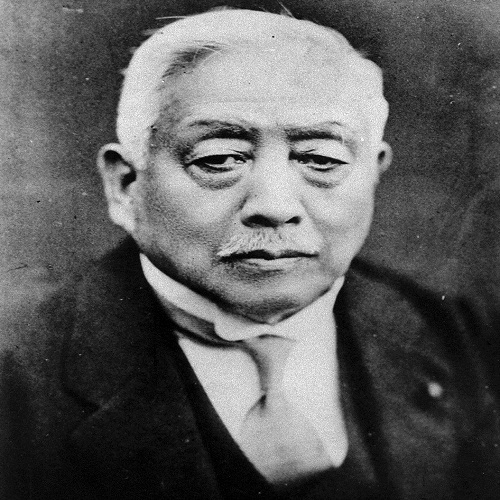
Choe Nam-seon (hotbirthdays.com/)
“The modern age is the age of power in which the powerful survive while the weak perish. This competition continues until death. But why? Because the struggle to be a victor and a survivor never ends. But how? It is a competition of intelligence, physical fitness, material power, economic power, the power of idea and confidence, and of organizational power. Everywhere this competition is underway daily.”
Capital Gazette 1917
Choe Nam-seon (1890- 1957), a prominent Korean historian, poet and publisher, was a leading member of the Korean independence movement.
However, in 1937, Choe began writing articles in support of Japan’s aggression against China in the Second Sino-Japanese War. In 1939 he became a professor at the Manchukuo Jianguo University. In 1943, attending the Greater East Asia Conference in Tokyo, he stated that Koreans were fortunate to be colonized by Japan, and could receive no higher honor than to die fighting in Imperial Japan’s effort to create the Greater East Asia Co-Prosperity Sphere.
______________________________________________
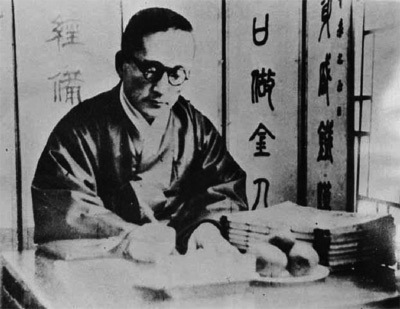
Yi Kwang-su (Wikimedia)
Yi Kwang-su’s (1892-1950) serialized novel Mujông (The Heartless), published in 1917, was extremely popular. The novel depicts a love triangle between three youths during the Japanese colonial rule of Korea. Yi Hyông-sik is a shy, young English teacher at a middle school in Seoul. Indecisive, he is torn between two women: Kim Sôn-hyông, a wealthy, educated Christian and Pak Yông-ch’ae, a musically gifted woman, raised in a traditional Confucian manner. Through the vehicle of romantic melodrama, the author depicts Korea’s struggles with modern culture and national identity.
– excerpt from The Heartlesss (Mujong)

Po st-WWII Korean Literature
In the early post-WWII years, most literature in South Korea dealt with the daily struggles of ordinary citizens and the collapse of the traditional values. Some South Korean writers developed a traditionalist path, while others followed an experimentalist path.
North Korea’s post-WWII literature was controlled by the state. Emphasis was placed on the philosophy of self-reliance (Juche), described as Great Leader Kim Il-sung‘s “original, brilliant and revolutionary contribution to national and international thought.” Juche exhorts North Korean masses to master revolution and construction in order to achieve true socialism.
20th Century Korean Poetry

To bring one chrysanthemum
to flower, the cuckoo has cried
since spring.
To bring one chrysanthemum to bloom,
thunder has rolled
through the black clouds.
Flower, like my sister returning
from distant, youthful byways
of throat-tight longing
to stand by the mirror:
for your yellow petals to open,
last night such a frost fell,
and I did not sleep.
_________________________________________________
Rise, the sun. Rise, the sun. Rise, the fair sun in your face washed clean. Beyond the mountains, flame and wolf the darkness all night. The fair sun, in your burning, youthful face, rise.
I loathe the moonlit night. I loathe the moonlit night. I loathe the moonlit night in a tearful ravine, I loathe the moonlit night in a desolate garden…
The sun, fair sun, if you come, if you come forth, I shall fancy a verdant mountain. I shall fancy a verdant mountain that flutters its wings. If a verdant mountain is here, I shall be pleased even in isolation.
Following a deer, following a deer, to a sunny spot, to a sunny spot, following a deer. If I meet a deer, I frolic with the deer,
Following a tiger, following a tiger, if I meet a tiger, I frolic with the tiger…
Rise, the sun. Rise, the sun. Even if it is not in my dreams I meet you, I shall call flowers and birds and beasts to the same place. With all of them sitting together, I shall enjoy a youthful, beautiful day
The post 20th Century Korean Literature appeared first on Enemy in the Mirror.
March 22, 2018
Fulbright Scholarship
Aug 1, 1946 President Truman signed the Fulbright Program into law, establishing the scholarships named for Arkansas Sen. William J. Fulbright.

James W. Fulbright (National Vanguard)
After WWII, Senator J. William Fulbright proposed that the U.S. government sell surplus war property to fund an international exchange program. In his bill, debts accrued by foreign governments during WWII would be discharged in return for funding an international educational program.
Sponsored by the U.S. Department of State’s Bureau of Educational and Cultural Affairs, the Fulbright Program provides competitive scholarships for international educational exchange of students, scholars, teachers, professionals, scientists and artists. Under the program, competitively selected American citizens can receive scholarships to study, conduct research, or pursue their special talents abroad. Additionally, foreigners may qualify to pursue the same activities in the U.S.
Notable Fulbright scholars include: many heads of state, Nobel Prize winners, MacArthur Foundation fellows and Pulitzer Prize winners.
The post Fulbright Scholarship appeared first on Enemy in the Mirror.
Enemy in the Mirror
I began by posting events around the turn This website www.enemyinmirror.com explores the consciousness, diplomacy, emotion, prejudice and psychology of 20th Century America and her enemies in wartime.
I began by posting events around the turn of the 20th century as I was researching my first novel about the Pacific War. I continued through WWII for my second novel about the Battle of the Atlantic. Now I am beginning to look at the Cold War as I gather information for my next novel about the Korean War. ...more
- Mark Scott Smith's profile
- 7 followers


